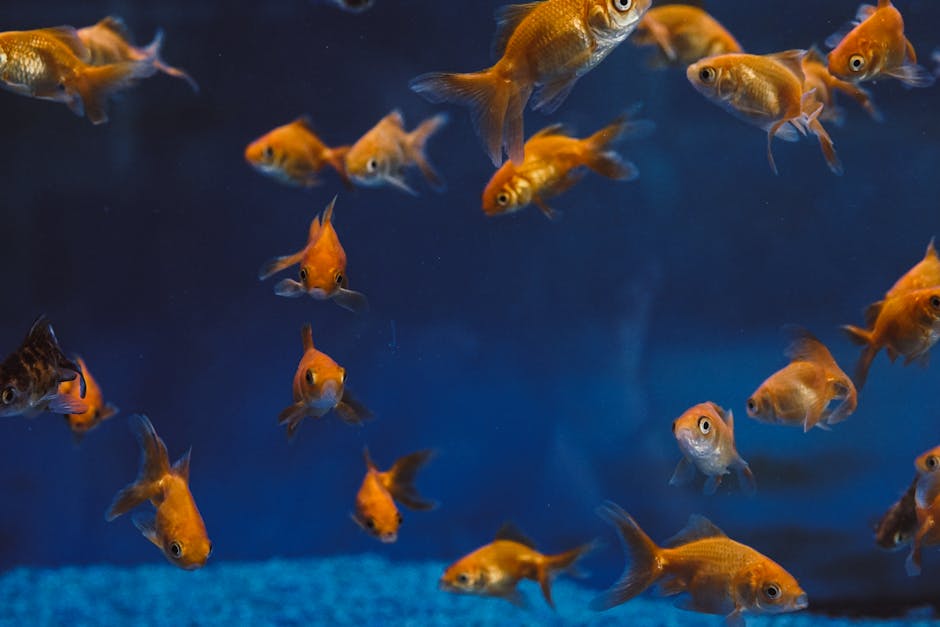Introduction
Have you ever wondered why your fish seem sluggish or your tank water looks cloudy despite having a filter? The answer often lies in one of the most overlooked aspects of aquarium care: how to change water in fish tank properly.
Many beginner aquarists don't realize that even the best filtration system can't prevent the gradual buildup of harmful compounds in their tanks. Regular water changes are the single most effective way to maintain a thriving aquatic environment and keep your fish healthy and vibrant.
In this complete guide, you'll discover why water changes are absolutely essential for fish health, learning how waste accumulation and chemical imbalances directly impact your aquatic pets. We'll break down the critical differences between partial and complete water changes, helping you understand which method works best for your specific setup. You'll also master the practical techniques for executing water changes safely, explore the ideal frequency based on your tank size and bioload, and learn common mistakes that could harm your fish.
Whether you're setting up your first aquarium or optimizing your current system, understanding proper water change procedures is fundamental to becoming a successful fish keeper. Let's dive in and transform your tank maintenance routine.
Understanding Water Changes in Aquariums
Water changes represent one of the most critical maintenance tasks for any aquarium owner. This process involves removing a portion of your tank's existing water and replacing it with fresh, treated water. Regular water changes remove harmful waste products, replenish essential minerals, and maintain optimal water chemistry for your fish's survival.
What Is a Water Change?
A water change removes accumulated nitrates, uneaten food, and fish waste that filters cannot eliminate completely. During this process, you'll drain water from the tank using a siphon or gravel vacuum, then refill it with dechlorinated water at matching temperature and pH levels. This fundamental practice prevents toxic buildup and keeps your aquarium ecosystem balanced.
Most aquarium experts recommend changing water every 7-14 days for standard tanks. Your specific schedule depends on tank size, fish bioload, and filtration capacity. Smaller tanks require more frequent changes since waste accumulates faster in limited water volumes.
Types of Water Changes: Partial vs. Complete
Partial water changes involve removing 25-50% of your tank's water weekly. This method maintains beneficial bacteria while reducing harmful compounds. Partial changes suit most community aquariums and planted tanks perfectly.
Complete water changes remove all water and typically occur only during emergency situations or tank cycling. This drastic approach eliminates beneficial bacteria colonies, potentially harming your tank's biological balance. Avoid complete changes unless absolutely necessary.
When you change water fish tank regularly using partial methods, you'll notice improved fish health, clearer water, and vibrant plant growth. Start with 25% weekly changes and adjust based on your tank's specific needs and water quality test results.
Why Regular Water Changes Are Essential for Fish Health
Regular water changes form the foundation of responsible fish care. When you change water fish tank systems, you actively remove accumulated toxins, waste products, and excess nutrients that threaten your aquatic environment. This simple maintenance task directly impacts fish behavior, growth rates, and overall longevity.
Removing Harmful Toxins and Waste Buildup
Fish continuously produce ammonia through their gills and waste, which transforms into nitrite and then nitrate. Even with a functional filter, these compounds accumulate over time and reach toxic levels. Regular water changes dilute these harmful substances, preventing poisoning that causes lethargy, loss of appetite, and gill damage.
Uneaten food and decaying plant matter also decompose in your tank, creating additional toxins. By removing 25-30% of water weekly, you eliminate these pollutants before they harm your fish. This practice is especially critical in smaller tanks with limited biological filtration capacity.
Maintaining Optimal pH and Chemical Balance
Water chemistry naturally drifts as organic matter breaks down and minerals deplete. Stable pH levels (typically 6.5-7.5 for most fish) are crucial for proper gill function and nutrient absorption. Fresh water replenishes essential minerals and buffers pH fluctuations that stress your fish.
Different fish species require specific water parameters. Regular testing and partial water changes help maintain these conditions consistently.
Preventing Disease and Extending Fish Lifespan
Poor water quality weakens fish immune systems, making them susceptible to infections and parasites. Healthy water conditions reduce stress and disease outbreaks significantly. Fish in well-maintained tanks exhibit vibrant colors, active swimming patterns, and increased lifespans—often living years longer than their counterparts in neglected environments.
Commit to weekly water changes as your most valuable investment in fish health.
Step-by-Step Guide: How to Change Water in Your Fish Tank
Regular water changes are essential for maintaining a healthy aquatic environment. Learning how to change water in your fish tank properly prevents stress to your fish and keeps harmful chemicals at safe levels. This guide walks you through the entire process.
Preparation and Tools You'll Need
Gather all necessary equipment before you begin. You'll need a clean bucket (never used for chemicals), a siphon or gravel vacuum, a water thermometer, and a dechlorinator solution. Having everything ready prevents your fish from experiencing prolonged stress during the process.
Fill your bucket with fresh water and let it sit for 15 minutes to reach room temperature. Temperature shock is one of the most common mistakes aquarium owners make. Cold water can stress or harm your fish, so always match the temperature of replacement water to your tank's current temperature.
The Process: Removing and Replacing Water Safely
Start by removing 25-30% of your tank's water using a siphon or gravel vacuum. This tool simultaneously removes debris from the substrate while draining water. Work slowly to avoid disturbing your fish unnecessarily.
Treat your replacement water with dechlorinator according to package instructions. Add the fresh water gradually to your tank, pouring it gently against the glass or into your hand to minimize disruption. Never add water directly from the tap without treatment, as chlorine harms fish.
Testing Water Quality After Changes
Check your water parameters using a test kit within an hour of completing the change. Monitor ammonia, nitrite, nitrate, and pH levels to ensure they remain stable. Most fish thrive when ammonia and nitrite stay at zero, with nitrate below 40 ppm.
Perform partial water changes weekly for most aquariums to maintain optimal conditions.
Best Practices and Pro Tips for Changing Fish Tank Water
Mastering the fundamentals of water maintenance ensures your aquatic ecosystem thrives. Following expert guidelines protects fish health while optimizing water quality. These proven strategies transform routine maintenance into an efficient, effective process.
Ideal Frequency and Percentage Guidelines
Most aquariums benefit from 25-30% water changes every one to two weeks. Heavily stocked tanks or those with poor filtration may require weekly 50% changes. Start by testing your water parameters—if nitrate levels spike quickly, increase change frequency accordingly.
The percentage you remove depends on bioload and tank size. Small tanks (under 20 gallons) need more frequent changes due to rapid waste accumulation. Larger established systems stabilize better, allowing longer intervals between maintenance sessions. Never remove more than 50% unless addressing a specific water quality crisis.
Temperature and Dechlorination Best Practices
Temperature shock kills fish faster than most aquarists realize. Always match replacement water temperature to your tank within one degree Celsius. Let water sit for 24 hours before adding, or use an aquarium heater to warm it gradually.
Chlorine and chloramine in tap water damage fish gills and beneficial bacteria. Treat all replacement water with a quality dechlorinator before introduction. Some products also detoxify heavy metals and condition the water simultaneously, offering comprehensive protection.
Creating a Maintenance Schedule That Works
Consistency matters more than perfection when you change water fish tank regularly. Mark your calendar for the same day weekly or bi-weekly. Set phone reminders to prevent schedule slips that compromise water quality.
Document your maintenance in a simple log, noting water parameters, changes made, and observations. This record helps identify patterns and adjust your routine as needed. Automated reminders and pre-filled water containers streamline the entire process, making maintenance sustainable long-term.
Common Mistakes to Avoid When Changing Aquarium Water
Maintaining proper water quality requires more than just regular water changes. Many aquarium owners unknowingly make critical errors during this routine maintenance that stress fish and destabilize the tank ecosystem. Understanding these common pitfalls helps you change water fish tank properly and keep your aquatic pets thriving.
Replacing Too Much Water Too Quickly
Removing excessive water in one session shocks your fish and disrupts beneficial bacteria colonies. Most experts recommend changing only 20-30% of tank water weekly for established aquariums. Changing 50% or more eliminates nitrogen-fixing bacteria that break down harmful ammonia and nitrite.
When you remove large volumes rapidly, pH and temperature fluctuate dramatically. Fish experience stress responses including erratic swimming, loss of appetite, and weakened immunity. Start with smaller percentages and increase gradually only if water parameters indicate problems.
Forgetting to Dechlorinate Tap Water
Chlorine and chloramine in municipal tap water kill beneficial bacteria and damage fish gills. Never add untreated tap water directly to your tank. Use a reliable water conditioner that neutralizes these chemicals within seconds of addition.
Quality dechlorinators also bind heavy metals and remove ammonia. Apply the conditioner to replacement water before adding it to the aquarium. This simple step prevents unnecessary fish stress and maintains your biological filter's effectiveness.
Neglecting Temperature Acclimation for Fish
Temperature mismatches between replacement water and tank water cause thermal shock. Fish cannot regulate their body temperature and suffer organ damage when exposed to sudden changes exceeding 2-3 degrees Fahrenheit. Always match new water temperature to your current tank temperature using a reliable thermometer.
Let replacement water sit in a warm location for 30 minutes before adding it slowly. This gradual approach allows fish to adjust comfortably without experiencing dangerous stress responses that compromise their health and longevity.
Conclusion
Maintaining a thriving aquarium requires more than just installing a filter and feeding your fish regularly. As we've explored throughout this article, the practice of changing water in your fish tank stands as one of the most critical—yet frequently neglected—responsibilities of any aquarium keeper.
The key takeaways are clear: regular water changes remove harmful nitrates and waste products that accumulate over time, regardless of filtration quality. Second, consistent water maintenance prevents the cloudy water and sluggish behavior that often frustrate beginners and experienced hobbyists alike. Third, establishing a routine water change schedule tailored to your tank size and bioload creates a stable environment where fish don't just survive—they thrive with vibrant colors and active behavior. Finally, understanding the science behind these changes empowers you to make informed decisions about your specific aquarium's needs.
The good news? Implementing a proper water change routine is straightforward and requires minimal equipment. Whether you maintain a small betta bowl or a large community tank, committing to regular maintenance will transform your aquarium experience almost immediately.
Start today by assessing your current water change frequency. If you're changing water less than once weekly, increase to a schedule that works for your tank size. Within just two weeks, you'll likely notice clearer water, healthier fish, and a more balanced ecosystem. Your aquatic pets deserve the best care possible, and mastering the fundamentals of tank maintenance is the foundation for success. Your fish will thank you with years of beauty and vitality.

